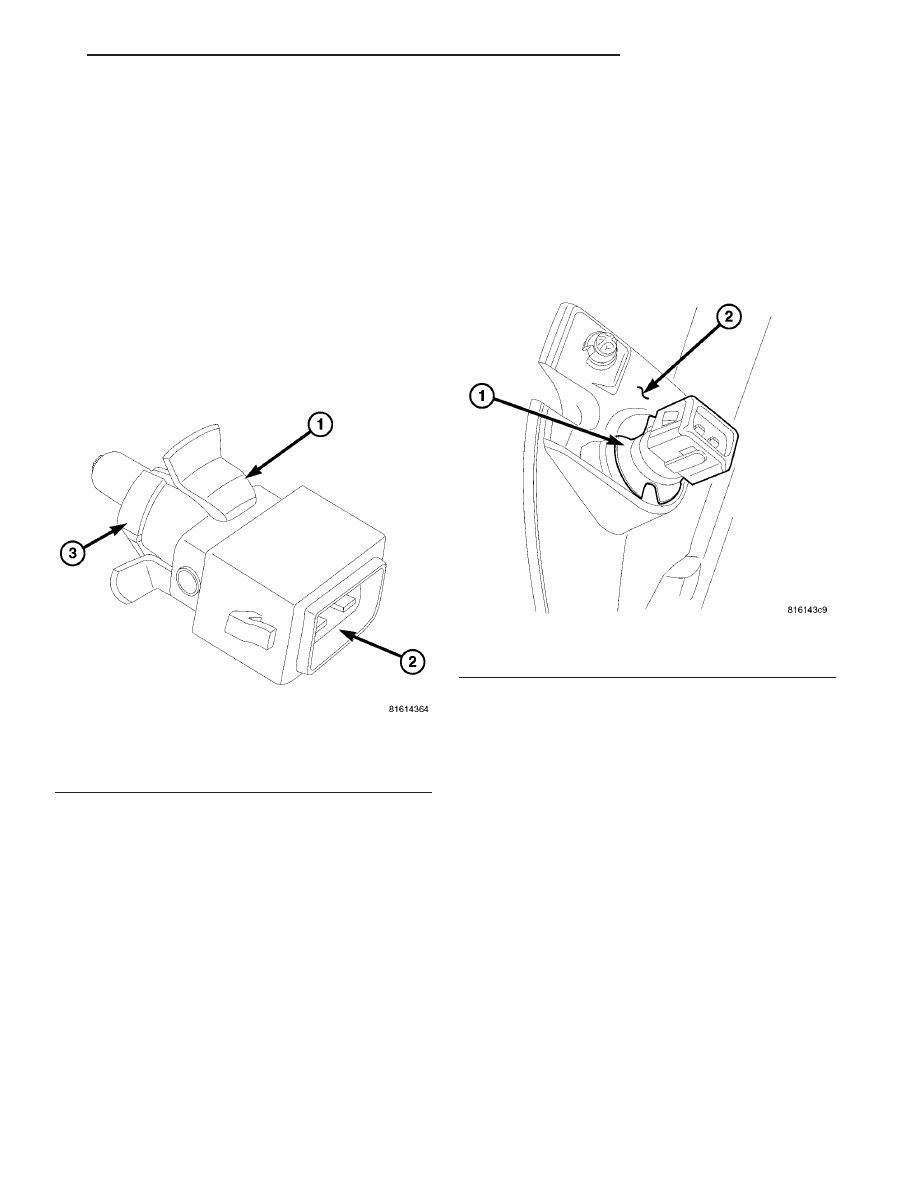Mercedes-Benz Sprinter / Dodge Sprinter. Manual - part 504

AMBIENT TEMPERATURE SEN-
SOR
DESCRIPTION
The ambient air temperature sensor is a variable
resistor that monitors the air temperature outside of
the vehicle. The ambient air temperature sensor is
connected to the instrument cluster through a two-
wire harness lead and connector of the vehicle elec-
trical system (Fig. 13). The instrument cluster sends
out a message on the CAN bus to the ATC control
module which uses the sensor data to maintain opti-
mum cabin temperature levels.
The ambient air temperature sensor is mounted to
the front licence plate bracket by three integral
retaining tabs.
OPERATION
The ambient temperature sensor is a variable
resistor that operates on a five-volt reference signal
sent to it by the instrument cluster. The resistance in
the sensor changes as temperature changes. Based
upon the resistance in the sensor, the instrument
cluster sends the ATC control module a specific volt-
age on the temperature sensor signal circuit, which
is programmed to correspond to a specific tempera-
ture.
The ambient temperature sensor is diagnosed
using the DRBIII
t scan tool. Refer to Body Diagnos-
tic Procedures.
The
ambient
temperature
sensor
cannot
be
adjusted or repaired and, if faulty or damaged, it
must be replaced.
REMOVAL
(1) Disconnect and isolate the battery negative
cable.
(2) Remove the front license plate bracket (Refer
to
23
-
BODY/EXTERIOR/LICENSE
PLATE
BRACKET - REMOVAL).
(3) Disconnect the wire harness connector from the
ambient temperature sensor (Fig. 14).
(4) Disengage
the
sensor
retaining
tabs
and
remove the ambient temperature sensor from the
front license plate bracket.
INSTALLATION
(1) Install the ambient temperature sensor onto
the front license plate bracket. Make sure the retain-
ing tabs are fully engaged.
(2) Connect the wire harness connector to the
ambient temperature sensor.
(3) Install the front license plate bracket (Refer to
23 - BODY/EXTERIOR/LICENSE PLATE BRACKET
- INSTALLATION).
(4) Reconnect the battery negative cable.
BLOWER MOTOR RESISTOR
DESCRIPTION
This temperature control system uses a blower
motor resistor (Fig. 15). The blower motor resistor is
mounted to the top of ventilation housing located in
the engine compartment. The blower motor resistor
consists of a molded plastic mounting plate with an
integral retaining tab and wire connector receptacle.
Concealed behind the mounting plate are coiled resis-
tor wires contained within a ceramic heat sink.
Fig. 13 Ambient Air Temperature Sensor
1 - AMBIENT TEMPERATURE SENSOR
2 - WIRE HARNESS CONNECTOR
3 - RETAINING TABS (3)
Fig. 14 Ambient Temperature Sensor
1 - AMBIENT TEMPERATURE SENSOR
2 - FRONT LICENSE PLATE BRACKET
VA
CONTROLS-FRONT
24 - 17